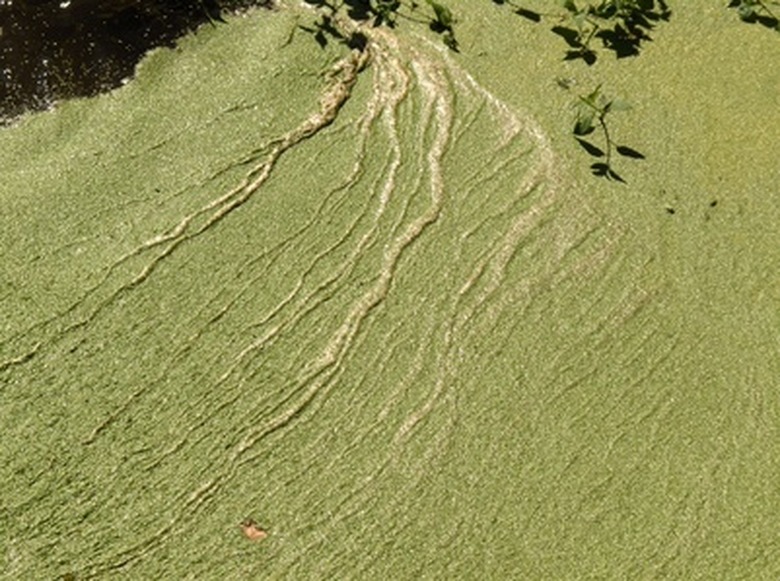The Effect Of Liquid Fertilizer On Algae
A gardener generally thinks of liquid fertilizer's positive aspects more often than imagining the negatives that can occur when it is misapplied. But over-application and mismanagement during the spraying of liquid fertilizers can have a harmful effect on a water body and its algae. Fertilizer can choke off and kill an entire body of water in just a few seasons.
Nitrogen and Phosphorous
Nitrogen and phosphorous are two nutrients in liquid fertilizer that help plants grow. When applied to lawns, flowers, vegetable and fruit gardens, these nutrients aid growth. But when nitrogen and phosphorous are added to a body of water, algae growth is promoted. Algae grows at an incredible rate, causing drastic effects in the water.
- A gardener generally thinks of liquid fertilizer's positive aspects more often than imagining the negatives that can occur when it is misapplied.
- But when nitrogen and phosphorous are added to a body of water, algae growth is promoted.
Oxygen Depletion
As algae grows at a fast rate, the oxygen required to keep the algae alive increases. Many bodies of water have a limited supply of oxygen that it can provide the ecosystem living inside of it. As algae grows, and uses up more of the oxygen, other creatures and plants are robbed of this essential ingredient of life. This can kill off other plants and animals that live in the body of water with the algae.
Amounts
Nitrogen and phosphorous do not need to be added in large amounts to affect the ecosystem of a body of water. 1 pound of extra phosphorous in a lake may cause hundreds of pounds of algae growth. As aquatic plants grow, and some die, this exacerbates microorganism growth. Microorganisms feed on the dead plant matter and multiply, using up even more oxygen.
- As algae grows at a fast rate, the oxygen required to keep the algae alive increases.
- As algae grows, and uses up more of the oxygen, other creatures and plants are robbed of this essential ingredient of life.
Algae Toxicity
Some varieties of algae, such as blue-green algae, are toxic to humans and animals. Coming into contact with some forms of blue-green algae can cause rashes, stomach problems and even death in some animals.
How It's Spread
Liquid fertilizers can be spread by water run off from nearby farms, or through the soil, which is often blow by wind from a fertilized site into a body of water. Flooding caused by overflowing irrigation of fertilized land is of particular concern.
